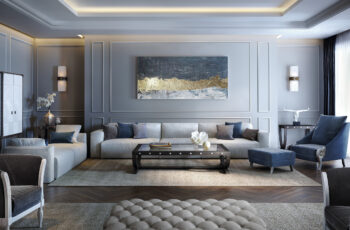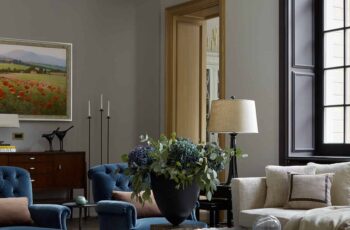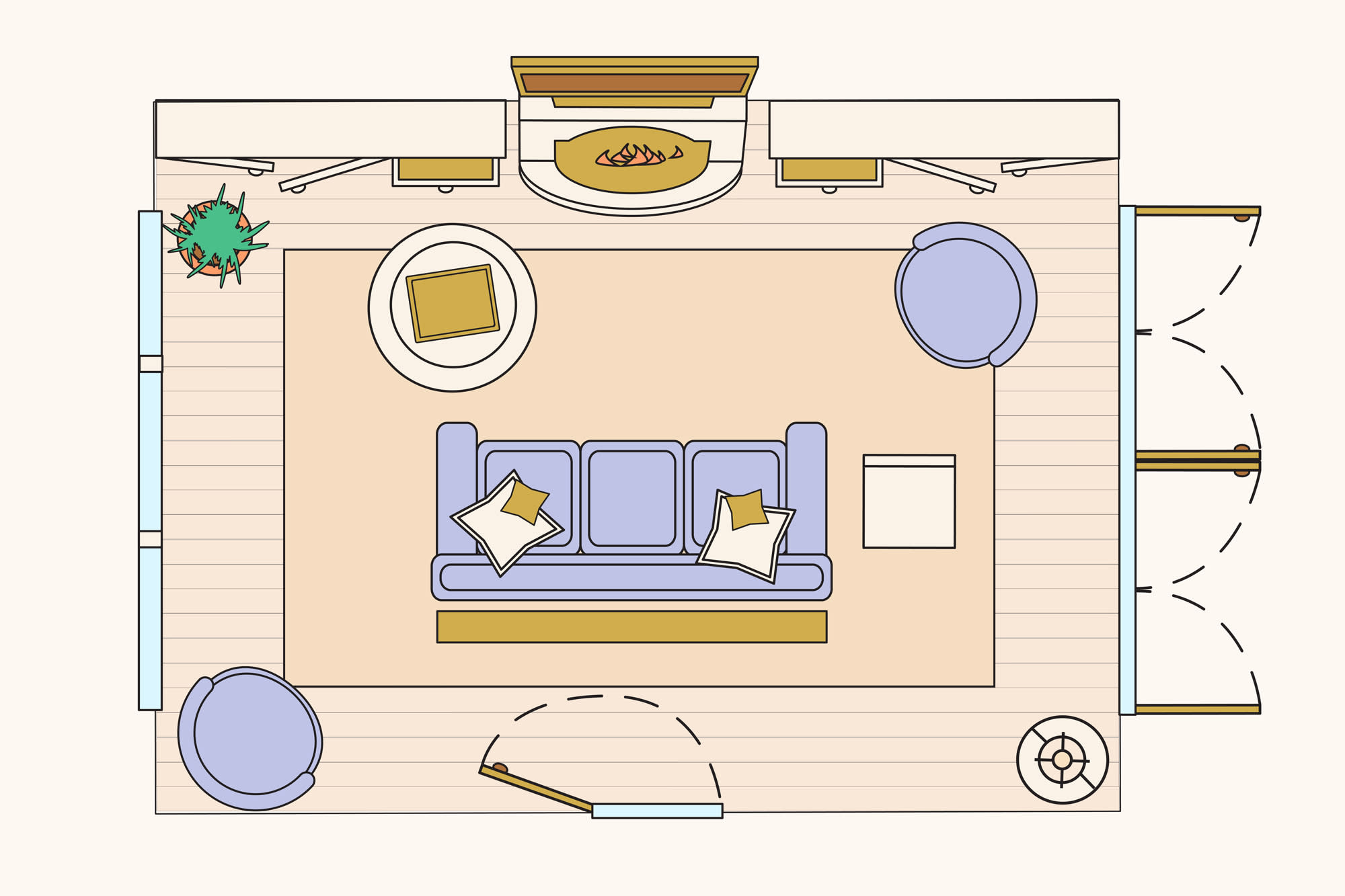
Crafting Your Sanctuary: The Ultimate Guide to Designing Your Own Living Room
The living room. More than just a collection of furniture, it’s the heart of the home, a sanctuary for relaxation, a stage for entertaining, and a canvas for your personal story. For many, the idea of designing this pivotal space from scratch can feel daunting, a task best left to professional interior decorators. But imagine a living room that perfectly encapsulates your style, meets your family’s unique needs, and radiates a comfort that only a truly personalized space can offer. This is the empowering promise of designing your own living room.
Embarking on this journey is not just about choosing paint colors and sofas; it’s an act of self-discovery, a creative exploration that culminates in a space that genuinely feels like you. It’s about understanding functionality, aesthetics, and the subtle art of creating an atmosphere. This comprehensive guide will walk you through every step, empowering you to transform your vision into a living, breathing reality.
I. The Foundation: Laying the Groundwork

Before you even think about fabric swatches or furniture showrooms, the most crucial phase is preparation. This is where you define your vision, set practical boundaries, and gather essential information.
1. Self-Discovery & Vision Boarding:
Start by looking inward. How do you truly use your living room? Is it primarily for quiet reading and contemplation? A bustling hub for family movie nights? A chic space for formal entertaining? A blend of all these? Understanding its primary functions will dictate your design choices.
Next, gather inspiration. This is the fun part!
- Pinterest & Instagram: Create dedicated boards for living room ideas. Pin everything that catches your eye – colors, furniture styles, textures, lighting, art. Don’t filter too much at this stage; just collect.
- Magazines & Books: Tear out pages from home decor magazines. Visit bookstores and browse design books.
- Real-Life Inspiration: Pay attention to spaces you admire – hotel lobbies, friends’ homes, even cafes. What elements do you love?
As you collect, patterns will emerge. You’ll start to see common threads in colors, styles (modern, bohemian, farmhouse, traditional), and moods. This forms your preliminary vision board – a visual representation of your dream living room.
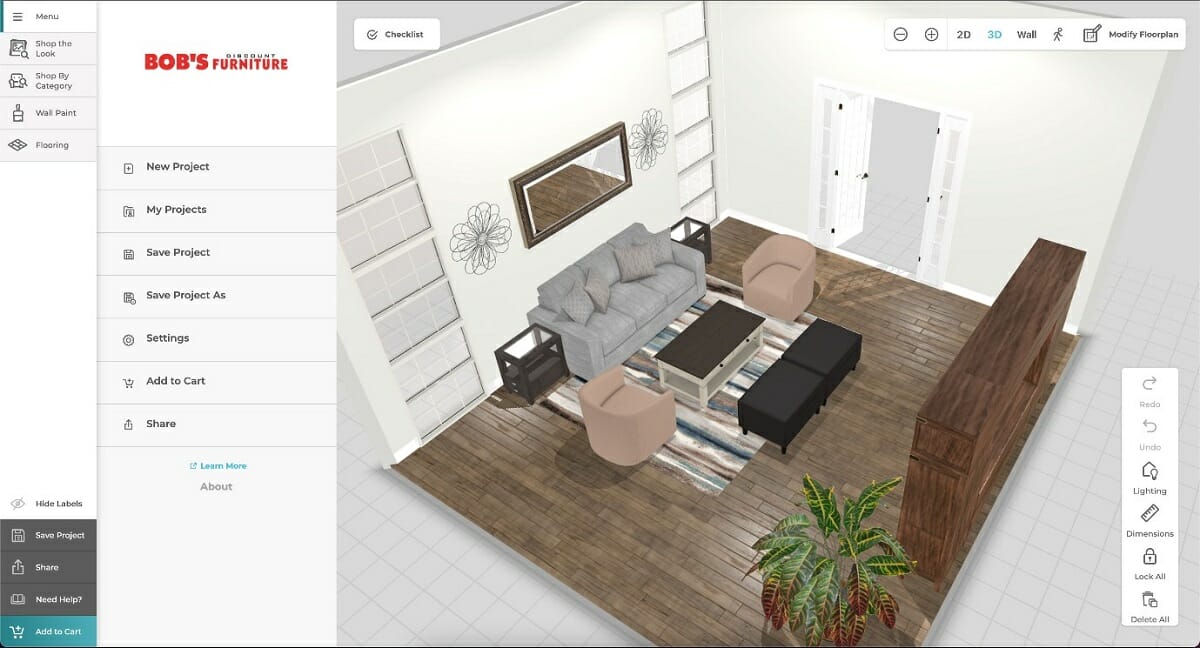
2. The Budget Blueprint:
Let’s be realistic: designing a living room, especially from scratch, can be an investment. A well-defined budget is not a limitation but a powerful guide that helps you prioritize and make smart decisions.
- Allocate Funds: Break down your budget into categories: furniture (sofa, chairs, tables), lighting, flooring, paint, window treatments, accessories (rugs, pillows, art), and potentially professional services (if you hire an electrician or painter).
- Prioritize: Decide what pieces are most important to invest in. A quality sofa, for instance, is often worth the splurge, while side tables or decorative items can be sourced more affordably.
- Expect the Unexpected: Always build in a 10-15% contingency for unforeseen expenses.

3. Measurements are Your M.A.P. (Measurements Are Paramount):
This step is non-negotiable. Accurate measurements prevent costly mistakes and ensure your furniture fits perfectly, allowing for comfortable flow.
- Room Dimensions: Measure the length, width, and height of your room. Note the location of windows, doors, outlets, radiators, and built-in features.
- Furniture Dimensions: If you have existing furniture you plan to keep, measure it. When considering new pieces, always check their dimensions (width, depth, height, and diagonal depth for sofas to ensure they fit through doorways).
- Create a Floor Plan: Use graph paper or an online tool to draw your room to scale. Cut out paper templates of furniture (also to scale) and move them around to test different layouts. This visual exercise is invaluable.
4. Assess Your Space’s Personality:
Consider the fixed elements of your room:

- Natural Light: How much light does the room receive, and from which direction? This will influence your color choices and lighting strategy. A north-facing room might benefit from warmer tones, while a south-facing room can handle cooler hues.
- Architectural Features: Does your room have a fireplace, built-in shelves, unique windows, or interesting wall textures? These are assets to highlight or work around.
- Existing Elements: What existing flooring, trim, or wall colors are you keeping? Your new design must harmonize with these.
II. The Blueprint: Crafting Your Layout & Flow
Once you have your foundation, it’s time to define how the room will function and feel.
1. Defining Zones and Functionality:
A living room often serves multiple purposes. Think about creating distinct "zones":
- Conversation Zone: Centered around a focal point (fireplace, coffee table, or media center) with seating arranged for easy interaction.
- Media Zone: If a TV is a primary feature, ensure comfortable viewing angles and manage glare.
- Reading Nook: A cozy armchair, a good lamp, and a small table.
- Play Area: If you have children, designate a section for their toys and activities, ideally with integrated storage.
2. The Dance Floor of Your Home: Traffic Flow:
Ensure there’s a clear, unobstructed path for movement through the room. Avoid placing large furniture pieces directly in the main thoroughfare. Aim for at least 30-36 inches (75-90 cm) for primary pathways and 18-24 inches (45-60 cm) between furniture pieces like a sofa and coffee table.
3. The Anchor Piece:
Every living room needs an anchor – usually the largest piece of furniture, often the sofa. This piece typically faces the focal point (fireplace, large window, or TV). Once the anchor is placed, other pieces (chairs, tables) can be arranged around it to create a cohesive conversation area.
III. Palette & Personality: The Art of Color & Texture
This is where your vision truly comes to life, dictating the mood and atmosphere of the space.
1. The Emotional Core: Choosing Your Color Palette:
Color profoundly impacts mood. Warm colors (reds, oranges, yellows) create a cozy, energetic feel, while cool colors (blues, greens, purples) evoke calmness and serenity.
- The 60-30-10 Rule: A classic design guideline:
- 60% Dominant Color: Your main wall color or the largest furniture piece. This sets the overall tone.
- 30% Secondary Color: Used for drapery, accent chairs, or a large rug. This adds depth and contrast.
- 10% Accent Color: Pops of color in pillows, art, or decorative objects. This adds personality and excitement.
- Test, Test, Test: Paint swatches on your walls and observe them throughout the day in different light conditions. Colors look different in natural light versus artificial light.
2. Texture: The Unsung Hero:
Don’t underestimate the power of texture. It adds warmth, depth, and interest to a room, even within a monochromatic scheme.
- Vary Materials: Combine smooth (glass, polished metal) with rough (wood, stone), soft (velvet, wool) with hard (leather, ceramic).
- Layering: Think about a chunky knit throw over a linen sofa, a jute rug on a hardwood floor, or a woven basket next to a sleek side table. Each adds a tactile dimension.
IV. Furniture: Form Meets Function
Furniture is the backbone of your living room, defining its functionality and contributing significantly to its aesthetic.
1. Scale and Proportion are King:
One of the most common design mistakes is choosing furniture that is either too large or too small for the room.
- Don’t Overcrowd: A room filled with too many large pieces will feel cramped and uninviting.
- Don’t Underwhelm: A vast room with tiny furniture will feel empty and cold.
- Balance: Aim for a mix of heights and sizes to create visual interest.
2. The Sofa: Your Comfort Command Center:
Invest in the best sofa you can afford. It’s often the most used piece of furniture and sets the tone for comfort.
- Style: Does it align with your overall vision (e.g., sleek modern, plush traditional, relaxed sectional)?
- Comfort: Test it out! Sit, recline, imagine yourself relaxing there.
- Durability: Consider fabric and frame quality, especially for high-traffic homes.
3. The Supporting Cast:
- Chairs: Provide additional seating and can introduce different styles or colors.
- Coffee Tables: Essential for functionality, offering a surface for drinks, books, or decor. Consider shape (round for flow, rectangular for definition) and material.
- Side Tables: Necessary next to seating for lamps and personal items.
- Storage Solutions: Ottomans with storage, built-in shelves, or stylish cabinets help keep clutter at bay.
4. Multi-functional Marvels:
In smaller spaces, look for pieces that serve double duty:
- Ottomans that act as extra seating, footrests, and storage.
- Nesting tables that can be pulled apart when needed.
- Sleeper sofas for guest accommodation.
V. Illuminating Your Vision: The Power of Lighting
Good lighting can transform a room, enhancing its mood, highlighting features, and ensuring functionality. Relying solely on overhead lighting is a common mistake.
1. Layers of Light:
Think in layers to create a dynamic and versatile lighting scheme:
- Ambient Lighting: Provides overall illumination (overhead fixtures, recessed lights).
- Task Lighting: Focused light for specific activities (reading lamps next to a chair, desk lamps).
- Accent Lighting: Highlights specific features like artwork, architectural details, or plants (picture lights, spotlights, uplights).
2. The Magic of Dimmer Switches:
Install dimmers on all your light fixtures. They allow you to control the intensity of light, easily shifting the mood from bright and functional to warm and intimate.
3. Embrace Natural Light:
Maximize natural light by:
- Window Treatments: Choose curtains or blinds that allow for light control (e.g., sheer during the day, blackout at night).
- Mirrors: Strategically placed mirrors can reflect light and make a room feel larger and brighter.
VI. The Finishing Touches: Art, Accessories & Personalization
This is where your living room truly becomes yours, telling your story and reflecting your personality.
1. Art: Your Room’s Storyteller:
Art adds character, color, and a focal point.
- Placement: Hang art at eye level (center of the piece roughly 57-60 inches from the floor).
- Scale: Choose art that is proportionate to the wall and furniture it’s displayed above.
- Personal Connection: Select pieces that resonate with you, whether they’re original paintings, prints, photographs, or textiles.
2. Curated Collections, Not Clutter:
Display items that are meaningful to you – travel souvenirs, family photos, cherished heirlooms. But aim for a curated look rather than overwhelming clutter.
- Grouping: Arrange objects in odd numbers (threes or fives) for visual appeal.
- Vary Heights: Mix tall and short items on shelves or coffee tables.
- Empty Space: Allow for some negative space; not every surface needs to be filled.
3. The Green Touch: Plants:
Indoor plants bring life, freshness, and a touch of nature into your living room. They also improve air quality. Choose plants that thrive in your room’s light conditions.
4. Textiles & Soft Furnishings:
Pillows, throws, and curtains are powerful tools for adding color, pattern, and texture. They can easily be changed to refresh the room’s look seasonally or when you crave an update.
VII. The Journey: From Concept to Comfort
Designing your own living room is not a race; it’s a marathon.
1. Patience and Playfulness:
Don’t expect everything to come together instantly. Enjoy the process of hunting for the perfect piece, experimenting with layouts, and trying out different color combinations. Be open to happy accidents and evolving ideas.
2. Don’t Fear the Rearrange:
Once your furniture arrives, don’t be afraid to move things around. Live with a layout for a few days, then try another. Sometimes, the perfect arrangement only reveals itself through trial and error.
3. Shop Smart, Not Hard:
Mix and match! Not everything needs to be brand new or expensive.
- High-Low Mix: Splurge on key pieces (like a comfortable sofa) and save on others (accessories, side tables).
- Thrift & Vintage: Explore flea markets, antique shops, and online marketplaces for unique, character-filled pieces.
- DIY: Consider painting an old dresser, reupholstering a chair, or creating your own art.
4. The Power of a Professional Eye (Optional):
If you hit a wall or feel truly stuck, consider a one-time consultation with an interior designer. Many offer hourly services where they can provide a fresh perspective, confirm your ideas, or suggest solutions to tricky problems without requiring a full design project.
Conclusion
Designing your own living room is an incredibly rewarding endeavor. It’s an intimate process that transforms a mere space into a personalized sanctuary, a reflection of your taste, needs, and dreams. By taking the time to plan, experiment, and infuse the space with your unique personality, you’ll create a living room that not only looks beautiful but also truly feels like home – a comfortable, inviting, and deeply personal haven for you and your loved ones to enjoy for years to come. So, embrace the journey, trust your instincts, and prepare to fall in love with the living room you’ve meticulously crafted yourself.

Crafting Your Sanctuary: The Ultimate Guide to Designing Your Own Living Room pictures collections gallery
Crafting Your Sanctuary: The Ultimate Guide to Designing Your Own Living Room is a nice pictures and stock photo for your computer desktop or your smartphone device (ipad, tablet, blackberry, iphone, and other device) and also for your personal use. Free available for desktop wallpaper or additional image collections for your all needs. And was uploaded by admit at date August 3, 2025. You can download it in your computer by clicking download button to save image... have nice day and have fun guys..
This 1 image in featured post from 0 Photos/images Gallery and awesome picture selections about Crafting Your Sanctuary: The Ultimate Guide to Designing Your Own Living Room is available to download. "Download & Save" images/pictures/wallpapers now and this Is one of the post that listed in packed to Category is Living Room Design Ideas directory, with image dimension/resolution size is 2000 × 1333 px and size image/picture file is 175 KB with original link post ID is : https://powae.pw/crafting-your-sanctuary-the-ultimate-guide-to-designing-your-own-living-room/. Get download/save images in post and gallery, "download" images or "preview" it on a bigger image for spesification sample in Large size (full attachment size) here : [Download & View to Large size]. Just Simple way, in thumbnail or in Gallery. *Click images to view Large Size.We collect this wonderful image from online and choose one of the best for you. Pictures collection that posted here was carefully chosen and published by author after choosing the ones which are best among the others. So, ultimately we make it and here these list of best image for your inspiration and informational reason regarding the Crafting Your Sanctuary: The Ultimate Guide to Designing Your Own Living Room as part of blogsite exclusive updates collection. So, take your time and find the best informations and pictures posted here that suitable with your needs and use it for your own collection and personal use. About Image information: Image has been submitted and You are able to give your opinion as evaluations to our web site value.
Don't forget to comment if you interest with this images, you can share this post to social media like as facebook, twitter, google+, pinterest, stumbleupon, and more. just click social media buttons for share this post Crafting Your Sanctuary: The Ultimate Guide to Designing Your Own Living Room Now. :)
Thanks for your visit, I hope you happy come to opo wae, wis opo wae, and get what you're looking for. And hope sometimes you will come back again here. All you need to do is help us develop by discussing this Crafting Your Sanctuary: The Ultimate Guide to Designing Your Own Living Room if you like it "leave your comment". have fun, Thank you.



